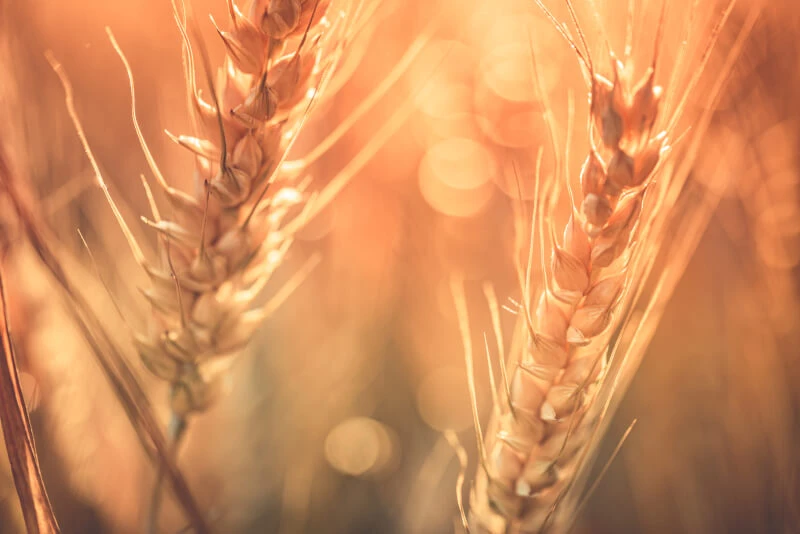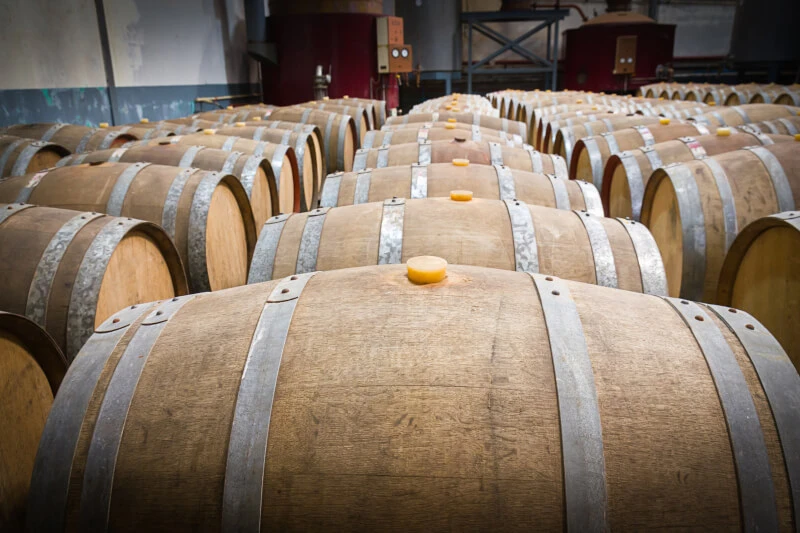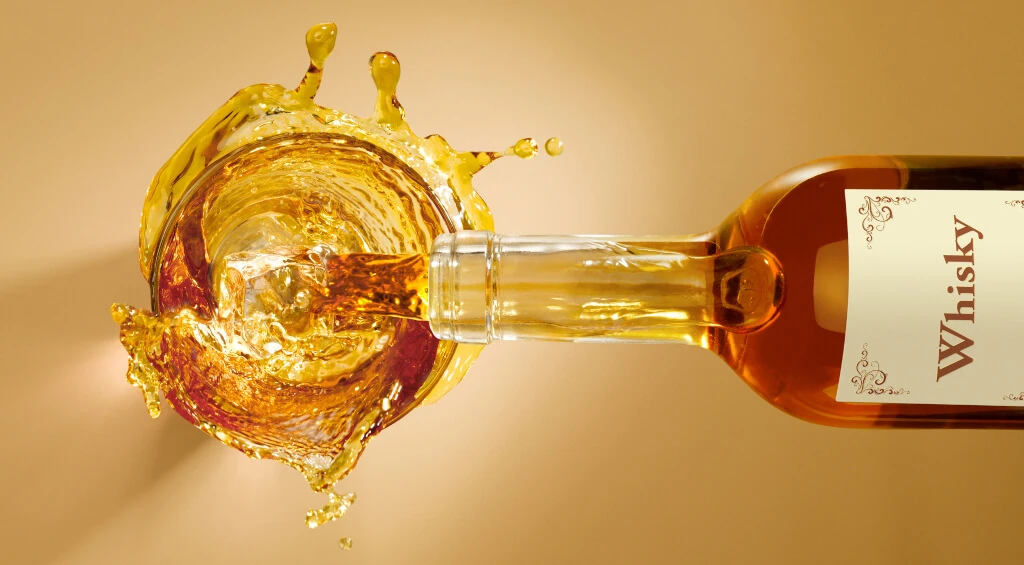Whiskey is a very sophisticated alcoholic beverage. Its flavor is beyond any other alcohol and it takes years to produce. While there are many varieties of whiskey, they are always characterized by the same unique complexity. This essay will explain the intricate whiskey-making process and the reasons for its difficulty. The whiskey sill, a key component in the creation of this one-of-a-kind spirit, will also be examined.
How is Whiskey Produced?
whiskey production is a laborious process that has been refined over many decades if not centuries. whiskey is produced by fermenting and distilling barley.
Choosing the Proper Grain

whiskey’s flavor can be affected by the kind of grain used and the environment in which it was cultivated. whiskey can be manufactured from a variety of grains, but barley is the most common. The term “mash bill” is used to describe this specific blend of grains. This is because the grains are mashed (or ground) before fermentation.
It is called “kilning” when peat smoke is used to dry the grain. The grain used to make whiskey may be cured using peat smoke before being mashed. This gives the whiskey a characteristic smokey flavor. Peat, a moss typically found in fens and marshes, is a useful fuel source. The smoke it produces upon combustion is rich in aromatic chemicals. whiskey gets its smoky character from these flavor compounds being absorbed by the grain.
Grain Fermentation
The fermentation process can then commence after the mash bill is fully established. When yeast is added, it ferments the mixture by fermenting the sugars in the grain. The mashed grain is then combined with water and brought to a boil. As a result, a wort-like liquid is created. Afterward, yeast is introduced to the cooled wort in fermentation tanks.
Alcohol and carbon dioxide are created during the fermentation process initiated by the yeast in the wort. The flavor of the finished whiskey depends on the kind of yeast that was employed. whiskey yeasts are often sorted into “top-fermenting” and “bottom-fermenting” categories. Fruitier flavors come from top-fermenting yeasts, whereas earthier flavors come from bottom-fermenting yeasts. The wort’s alcohol percentage is normally around 12% after a 48-hour fermentation phase.
The Next Step is Distillation
The wash, or fermented liquid, is subsequently put through a distillation process. The whiskey’s final flavor can also be affected by the still type.
Distillation involves heating a liquid and then gathering the vapors that are released during the heating process. The resulting liquid is called spirit and is made by condensing the vapors. Typically, copper pot stills are used to produce single-malt whiskies. The sulfur-based chemicals that contribute to the liquid’s “off” taste are removed with the aid of copper.
The resulting spirit has an alcohol level of about 70% after an eight-hour distillation procedure. After that, the spirit is aged in oak barrels for a while. The sort of whiskey being produced determines how long the liquid remains in the barrel.
What Happens During the Distillation Process?
Distillation involves heating a liquid and then gathering the vapors that are released during the heating process. The resulting liquid is called spirit and is made by condensing the vapors.
The still is the most crucial piece of equipment for making whiskey. The whiskey’s alcohol concentration and flavor can be affected by the still’s design. The pot still is the standard apparatus for distilling whiskey. A pot still is a large, spherical vessel with a narrow neck and a lid; therefore, the name. Although making whiskey in a copper pot still, which has been in use for centuries, may seem rather antiquated at first glance, this is a legitimate rationale for its continued use as the industry standard.
Copper was chosen for the pot still because of its high thermal conductivity. This allows for uniform heating of the spirit, a crucial step in making premium whiskey. The column still and the hybrid still are two other types of still. Column stills are thinner and taller than their pot still counterparts. The alcohol and water are separated by a series of plates inside. The hybrid still combines the advantages of the pot with the column.
What Difference Maturity Makes
Once whiskey has been distilled, it must be aged. The term “maturation” refers to the time spent maturing the liquor in oak barrels. This contributes to the maturation of the whiskey’s flavor and personality.
The type of barrel used, the environment, and the amount of time the spirit is left to age are just a few of the variables that might affect the maturation process. The choice of the barrel is crucial in the aging process. Oak is required for the barrels because of the flavor it adds to the whiskey. The next step is to pour water into the barrel. This helps the wood’s pores open up so the spirit can more easily flow in and draw out the taste. Two years later, the water is drained out and whiskey is added in its stead. The whiskey will be aged for anywhere from 10 to twenty years, depending on the desired flavor profile.
Why Do We Need Oak Barrels?
whiskey is aged in oak barrels, which are porous and allow the spirit to absorb and absorb taste from the wood. The wood also contributes vanilla, spice, and dried fruit characteristics to the whiskey. It also matters what kind of oak is used. Bourbon is typically aged in white wood from the United States, while Scotch whiskey is aged in European oak.

The surface area to volume ratio is also affected by the barrel’s size. More whiskey will be in contact with the wood in a tiny barrel because of the higher surface area to volume ratio. The flavor will be amplified as a result. whiskey will spend less time in touch with the wood in a larger barrel because of the reduced surface area to volume ratio. The flavor will soften as a result of this.
What Sets Single Malt Whiskey Apart From Blended Whiskey?
Single malt whiskey is distilled only once from malted barley. A kiln is used to dry the germinating barley. Then, the grain is combined with water to form the mash. After the mash has fermented, it is sent through a still.
One of the advantages of single malt whiskey is that all of its flavors originate in the malted barley. This allows for a high degree of complexity in the whiskey. However, because of the time and work involved in making them, single-malt whiskies can be quite pricey.
Conversely, blended whiskey is distilled from a mash of several grains, not just wheat or rye. Whiskies from multiple distilleries or even nations are combined to create a single blended whiskey. Scotch and Irish whiskies are typically blended to create blended whiskey.
Each distillery strives to achieve its distinct flavor profile, thus it keeps its specific recipe for blended whiskey secret. Blended whiskies are more approachable to non-whiskey drinkers because they are often lighter in body and flavor than single malt whiskies.
The Most Sophisticated Spirit Ever Distilled
Now you know the answer! Overview of the whiskey-making process. There are numerous moving parts, and they all serve a purpose in making the result possible. Whiskey is, without a doubt, the most sophisticated spirit ever created, and it is precisely this level of detail that makes whiskey so unique and desirable.

